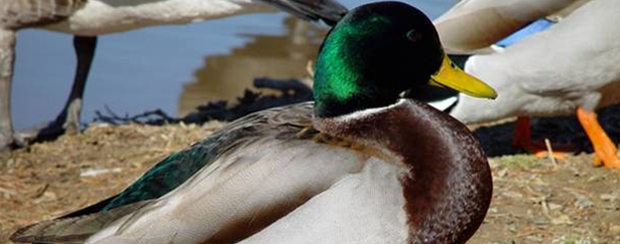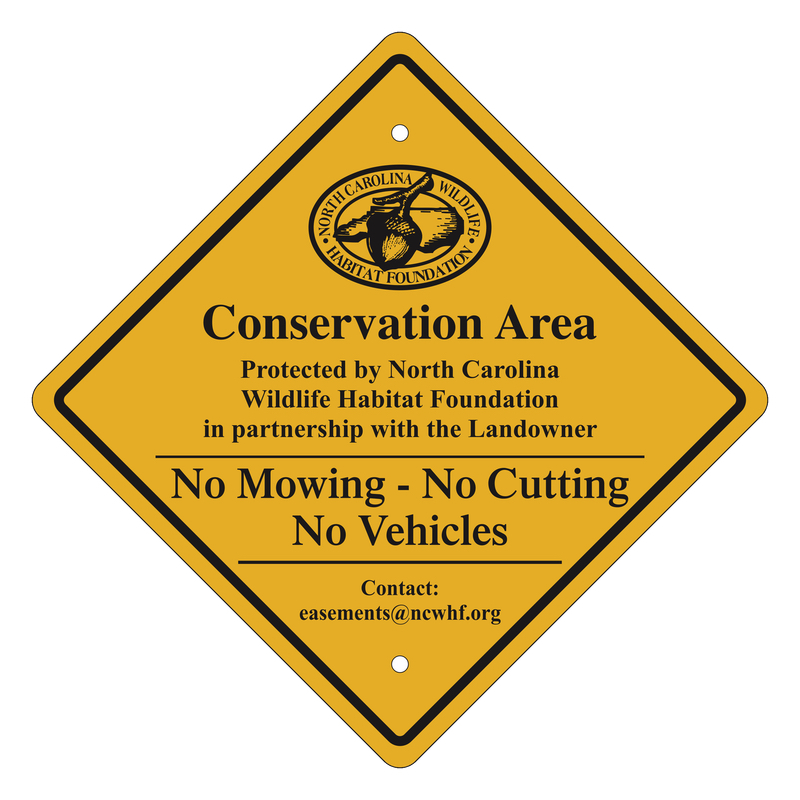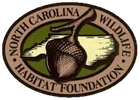
Caswell County Waterfowl
The Caswell County Waterfowl Impoundment
This project is in cooperation with the North Carolina Wildlife Resources Commission and the Ducks Unlimited M.A.R.S.H. Project. The N.C.W.H.F. has donated $16,500 to this plan.
NC Wildlife Foundation provides waterfowl impoundment funding
(as appeared in The Caswell Messenger, Inc., 7-29-1998, p.13)
The North Carolina Wildlife Habitat Foundation has joined hands with Ducks Unlimited and the North Carolina Wildlife Resources Commission to provide funding for the first Ducks Unlimited MARSH Project to be constructed in wildlife District Five.
The project will include a 12-acre waterfowl impoundment with dikes and water level control gates for flooding and draining the impoundment. Milo, millet, and other seed crops will be planted during the spring and summer months and the impoundment will be flooded in the fall to provide feeding and resting areas for local and migrating waterfowl. Many other wildlife species will also benefit from the food and cover created by the project.
The impoundment area is located on the H Compartment of the Caswell Game Lands, west of Country Line Creek and south of SR 1597. This game land is located in close proximity to the major population centers of the Piedmont of North Carolina. Large cities located within 100 miles of this game land include Winston Salem, High Point, Greensboro, Burlington, Durham, and Raleigh. Thus, in this area, there is a great need for public recreational opportunities. The availability of sites for potential waterfowl projects is limited in Piedmont due to the topography and intensity of development. Therefore, even though this project is small it will provide many opportunities for public recreation at a low development cost. The immediate area has moderate numbers of resident wood ducks and Canada geese available. The area also supports moderate numbers of migrating and wintering wood ducks, mallards, and black ducks.
“As more sportsmen endorse our organization and lend their financial support as members of the NCWHF, we will be able to identify and provide funding for many other wildlife conservation projects,” said Eddie Bridges, founder and executive director of the organization. For more information: NCWHF, P.O. Box 29187, Greensboro, NC 27429-9187.
PROJECT DESCRIPTION:
Purpose: The purpose of this project is to construct a new waterfowl impoundment on Caswell Game Land approximately 12 acres in size. This will involve the construction of dikes, the installation of a 36″ flashboard riser with an anti-seep collar and the seeding of dikes and the disturbed area. In addition, an existing road and parking area will be graveled to facilitate hunter access.
Location: The Caswell Game Land is located in Caswell County approximately 1 mile Southwest of the town of Yanceyville, Latitude 36° 25’ 10″ North Longitude 79° 17’ 20″ West
Ownership: The Caswell Game Land is owned by N.C. Wildlife Resources Commission and is managed by the Division of Wildlife Management.
Land Use/Mgt. History: The Caswell Game Land comprises a total of 16,589 acres. This game land is managed primarily for public hunting. Primary game species available include fox, mourning dove, quail, rabbit, squirrel, raccoon, deer and turkey. This site proposed for the construction of this impoundment lies adjacent to Country Line Creek. The open field contains approximately 12 acres and has been leased to a local farmer in past years for growing corn.
Management Plans: The impoundment will be managed for a variety of desirable vegetation for use by waterfowl and other wildlife. A portion of the impoundment will be planted to milo, a section will be planted in Japanese millet and the rest of the area will be disked to encourage natural vegetation (smartweeds, etc.) Also, winter wheat will be planted around the periphery and dikes for resident Canada goose utilization. In addition, several wood duck boxes will be erected. Waterfowl hunting on the impoundment will be limited to three one-half days per week.
Monitoring and Evaluation: Management practices will be documented, and field observations will be made to monitor plant response and species composition. Waterfowl surveys will be conducted to record waterfowl use. Periodic hunter bag checks will be conducted to monitor total harvest and species composition. Annual performance reports will be prepared to document progress towards management objectives.
Activity Schedule and Estimated Costs: Construction of the dikes, flashboard riser installation and road and parking area development will begin in the fall and winter of 1998, and planting will be accomplished in the spring of 1999.


